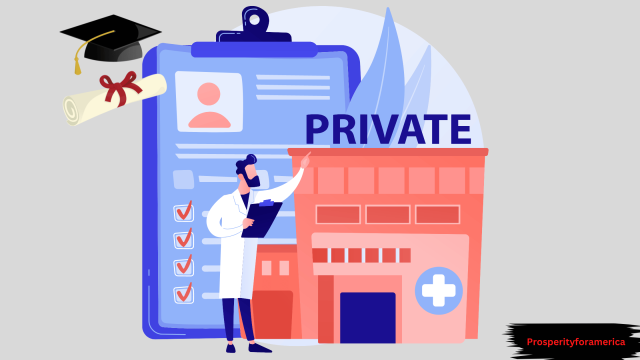The idea of free college is often framed as a solution to the growing problem of student loan debt, which has now surpassed $1.6 trillion in the United States.
However, the question of how much free college would actually cost remains a topic of debate and scrutiny.
While supporters argue that the benefits of free college would outweigh the costs, critics contend that it would be too expensive and financially unsustainable.
So to answer this, we will explore the various factors contributing to the cost of free college.
We will also examine some of the estimates and projections that economists and policy analysts have put forth.
What Does Free College Mean?
Free colleges are typically referred to as the various programs or initiatives that help students to reduce the cost of attending.
These include tuition fees as well as various costs like living expenses, other resources cost, or technological costs.
It costs around $680 billion yearly to provide free college at public institutions in the US.
However, free college programs are varied on various factors like the total cost of tuition, type of institute, enrollment criteria, eligibility criteria, and other expenses.
Free College Programs Categories
There are many different types of free college. So the cost of college varies according to the program.
The major types of Free-college programs include the First-Dollaarr Tuition free program, Last-Dollar Tuition Free program, and Debt-free programs.
Here are some of the key facts about these free college programs.
- If the tuition is up to $10,000 and grants cover $4,000 of that cost, the government will cover the remaining $6,000 in tuition costs.
- The Debt-Free program is the government’s most expensive free college program.
- The Last-Dollar Tuition-Free program is the one that costs the government the least money.
- Many of these initiatives have the support of elected officials and offer full funding for participation.
- The maximum Pell Grant is offered by the “College for All Act” and is roughly $12,990. Students typically utilize this to cover room and board.
- The maximum Pell Grant award is increased by $1,400 thanks to the “American Family Plan.”
First-Dollar Tuition-Free Programs
Simply put, the first-dollar program means that the College Promise funds are given to students first, before any other awarded funding or grant.
Students can use these amounts to cover the cost of attendance and tuition.

In this program, the cost of College Promise funding is granted to eligible students who do not consider any other additional funding grants like the federal Pell Grants.
Hence, this program offers the direct costs of students, and it also helps in reducing related costs like transportation, living, school materials, and other costs.
Though a First-dollar tuition-free program is provided quickly and requires less administrative work, it may not perfectly satisfy each student’s need.
- The First-Dollar Tuition Free program’s estimated cost would be $59 billion in the year it was applied by the federal government.
- If the tuition cost is totaled around $10,000, then the government would pay the total amount, i.e., $10,000.
- Room and board expenses go around $4,000.
- The Kalamazoo Promise program in Michigan state is a first implementation of a First-dollar Tuition-Free program.
Following is the distribution of funds from a First-Dollar Plan by Income Bracket.
| Lower Middle Quartile | 25.0% |
| Top Quartile | 25.0% |
| Bottom Quartile | 25.0% |
| Upper Middle Quartile | 25.0% |
Last-Dollar Tuition-Free Programs
The ‘Last-Dollar Program’ is the amount of College Promise funding that is awarded to eligible students, taking into account any extra public grants or funding the students are eligible for. Federal Grants are an example of such programs.
In this program, the government considers paying the remaining amount after grant aid has been applied.

While the program does not include the room and board cost, it can perfectly identify the exact level of financial need of the students.
Unlike the First-Dollar programs, these programs are not capable of reducing the other costs that come with being a student. These include school materials, transportation, childcare, and other costs.
Let’s get an overall idea about Last-Dollar tuition-free programs.
- The ‘Tennessee Promise program’ is a perfect example of a Last-Dollar program.
- Last -Dolar programs are the most implemented tuition-free programs implemented across the states.
- It amounted to around $27.8 billion for the federal government the Last-Dollar program when it was first implemented.
- After 11 years, it would cost the federal government around $15 billion.
Here is a distribution of the Last-Dollar Plan by Income Bracket.
| Lower-Middle Quartile | 19.0% |
| Top Quartile | 37.0% |
| Bottom Quartile | 13.0% |
| Upper-Middle Quartile | 31.0% |
Debt-Free Programs
Debt- Free programs are programs that cover the complete amount of college by the government. It covers the total cost of attendance.
This includes the whole tuition fees, the cost of board and room, and any other expenses.
Debt-Free helps students to attend public college without loans. Senator Brian Schatz endorsed the Debt-Free College Act.
Representative Mark Pocan is a remarkable tuition-free program.

For instance, if the tuition fee is $10,000 and the board and room fee is totaled around $15,000, then the government would fund the total amount of $25,000.
The estimated cost of the Debt-free College Act is around $95 billion.
This program cost the federal government around $75 billion in the year it was implemented.
The American Family Plan
The American Family Plan is a proposed legislative package put forth by President Joe Biden that aims to provide substantial support for American families.
The plan includes several initiatives designed to address some of the country’s most pressing social and economic issues, including child care, education, and healthcare.
It also calls for an increase in Pell Grant funding and provides additional funding for historically Black colleges and universities (HBCUs) and other minority-serving institutions.
Let’s have some insights into the American Family Plan.
- This program shares the amount of tuition between state/Indian governments (25%) and the federal government (75%).
- America’s College Promise Act of 2021 indicates that its program will continue to cost around $2.52 trillion yearly after 2031.
Here is an insight into the cost of America’s College Promise Act.
| Year | Cost Of America’s College Promise Act |
| 2022 | $0.10 trillion |
| 2023 | $0.32 trillion |
| 2024 | $1.91 trillion |
| 2025 | $1.99 trillion |
| 2026 | $2.07 trillion |
| 2027 | $2.15 trillion |
| 2028 | $2.18 trillion |
| 2029 | $2.33 trillion |
| 2030 | $2.42 trillion |
| 2031 | $2.52 trillion |
Free College Beneficiaries
Firstly, free college is designed to have significant benefits for minority communities.
Relying on the free programs implemented, free college benefits lower-income students.

The beneficiaries of a free college education are numerous and can include:
- Students: Students from low-income families who cannot afford higher education can benefit from a free college education. It can give them equal opportunities to pursue their academic goals and career aspirations without incurring massive student debt.
- Society: Free college education can lead to a more educated and skilled workforce, which can help increase productivity and economic growth. It can also reduce income inequality and help break the cycle of poverty.
- Government: Providing free college education can result in higher tax revenue for the government in the long run due to the increased earning potential of graduates. It can also reduce government spending on student loan programs.
- Employers: Employers can benefit from having a highly skilled and educated workforce, which can improve their business operations and competitiveness.
- Education System: Free college education can encourage more students to enroll in college, leading to a more diverse student body and a more robust education system. It can also increase the number of students who complete their degree programs.
Here are some of the facts regarding the beneficiaries of free college.
- 25% of the cost of a First-Dollar free program helps students living in the low-income quartile.
- 29% of the American Family Plan program funds target students living in the low-income quartile.
- 13% of the amount of the Last-Dollar program benefits students in the bottom income quartile.
The data below states that first-year college tuition funding became free by race.
| Race | Percent Of Distribution Of First-Year Funding |
| White | 53.0% |
| Hispanic | 21.0% |
| Black | 14.0% |
| Asian | 6.0% |
| More than One Race | 4.0% |
| Other | 2.0% |
Free College Cost By State
These programs offer data on how free college varies in cost by state. Let’s have a look at these.
- For residents pursuing associate degrees, the state of Tennessee supports a last-dollar program to assist students in covering the cost of tuition.
- About $30 million was spent on the Tennessee Promise program during the previous academic year.
- Students attending Tennessee community colleges are eligible for tuition reimbursement through the Tennessee Promise program.
- The Tennessee Promise program served as the inspiration for the initial America’s College Promise plan.
- Students who attend Oregon community colleges are eligible for free tuition through the Oregon Promise program.
- The student’s expected family contribution (EFC) determines whether or not they are eligible for the Oregon Promise program.
Let’s have a look at the cost of Free College in US states.
| State | First-Dollar Program (Initial Year Cost) | Last-Dollar Program (Initial Year Cost) |
| Arizona | $1,070 Million | $534 Million |
| California | $6,008 Million | $1,448 Million |
| Colorado | $1,049 Million | $561 Million |
| Florida | $2,217 Million | $701 Million |
| Georgia | $1,612 Million | $566 Million |
| Illinois | $3,314 Million | $2,214 Million |
| Indiana | $1,293 Million | $637 Million |
| Maryland | $1,204 Million | $743 Million |
| Massachusettes | $1,207 Million | $706 Million |
| Michigan | $2,696 Million | $1,563 Million |
| Minnesota | $1,122 Million | $669 Million |
| New Jersey | $2,361 Million | $1,517 Million |
| New York | $3,180 Million | $1,183 Million |
| North Carolina | $1,507 Million | $526 Million |
| Ohio | $2,317 Million | $1,260 Million |
| Pennsylvania | $2,984 Million | $2,077 Million |
| Tennessee | $1,005 Million | $302 Million |
| Texas | $5,544 Million | $2,501 Million |
| Virginia | $2,062 Million | $1,352 Million |
| Washington | $1,382 Million | $711 Million |
| Wisconsin | $1,079 Million | $703 Million |
Related Read:
Conclusion: How Much Would Free College Cost (2024)
While the benefits of free college, such as increased access to education and reduced student loan debt, may outweigh these costs, it is clear that such a policy would require significant investments and careful planning.
Furthermore, there are still many unanswered questions about how free college would be implemented, such as whether it would apply to all students or only to certain groups and how it would be funded.
As policymakers and lawmakers continue to debate the merits and challenges of free college, it is important to consider both the potential benefits and the costs of such a policy, as well as the broader implications for higher education and the economy as a whole.
So what are your thoughts on this? Let us know in the comment section below.
- CFI Discount Code (April 2024) – 40% OFF Coupon - April 3, 2024
- 25% Grammarly Student Discount (April 2024) - March 28, 2024
- College Dropout Rates 2023-24(Demographic Stats) - March 20, 2024


